Home Stretch
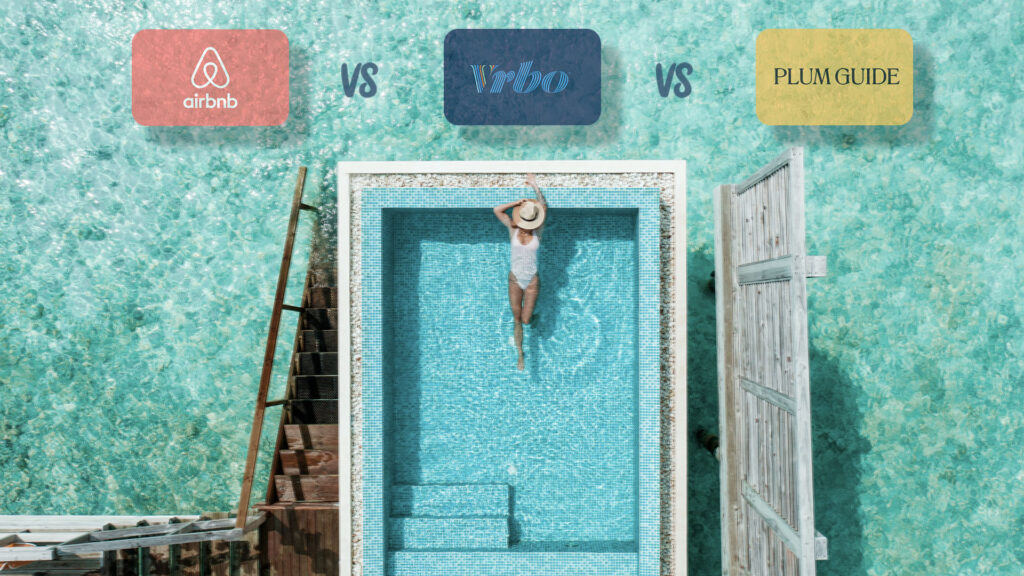
Introduction
Short term rentals have gotten a lot of coverage in the past few years, from revenge spending on vacations to housing shortages exacerbated by entire neighborhoods selling residential housing for pure short term plays.
At the end of 2020, AirBnb had just made its debut on the NYSE and the frothiness of the tech giant’s valuation was about to reach a fever pitch.
Countless ads had littered the airwaves to promote new stays with AirBnb or its Expedia Group owned rival VRBO. This ad driven approach has allowed these two titans to dominate the industry and lead the way for the User Experience of short term rentals to consolidate around a new industry standard. Contrast that with Plum Guide, a vacation rental tech company that focuses on a luxury level of high class rentals that typically pull from the higher-end of income earners who are less cost conscious and looking to splurge for a smaller selection of homes from a curated list.
I am going to highlight some of the UX decisions that informed the differences between Plum Guide (PG) and AirBnb/VRBO and why adjusting your products to your target audience creates two different strategies of addressing the end user problems.
INFORMATION ARCHITECTURE
Leading with high-quality photos of the property seems to be universally understood to be the top priority of the Short term rental industry. No one wants to visit a house sight unseen. Plum Guide swiftly follows this up with reiterating its promise.
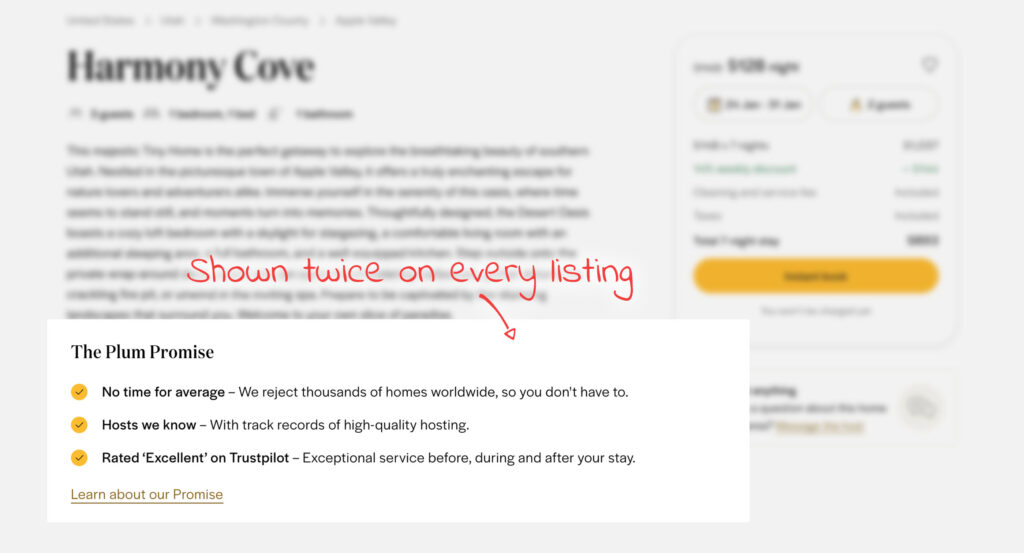
A short list of how PG doubles down on its lack of properties on the platform with an assurance of quality and satisfaction guarantee.
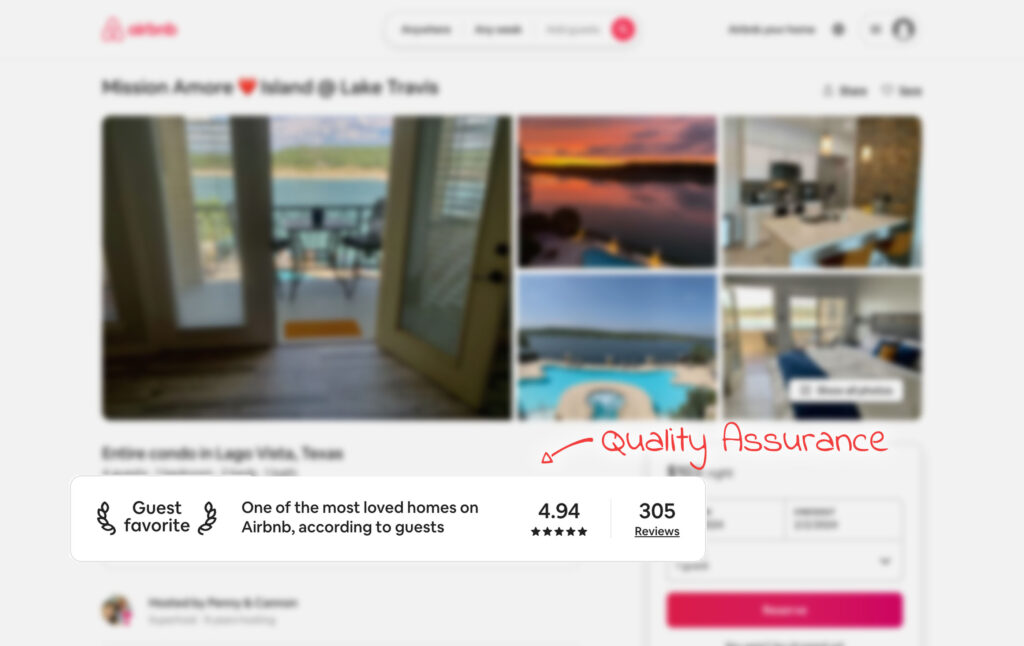
AirBnB wants its users to leverage its own dominant position in the marketplace. Everyone has either used the platform or knows someone who has stayed with an AirBnB host. This allows AirBnB to dedicate a huge area of the screen to market previous stays or if applicable advertise it SuperHost badges highlighting the numerous others who have booked this listing.
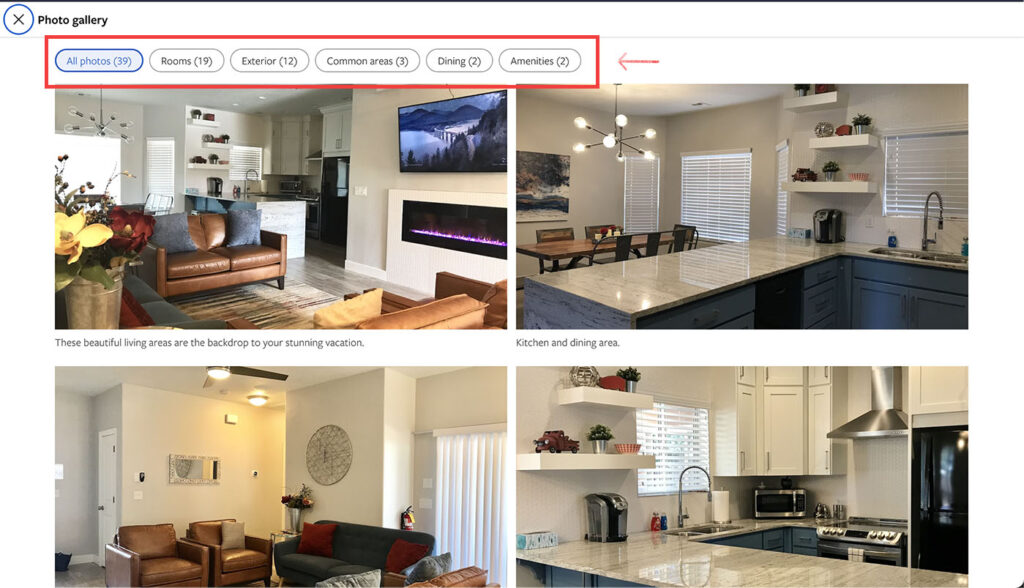
VRBO, being in association with Expedia Group, uses its background to drill down on the core questions a user is pondering when looking for a short term rental. Helpful is the expanded gallery of pictures showing a category highlight similar to that of an apartment or home. VRBO also has a near endless list of testimonials scrollable further down the page.
In place of a reviews section, an additional unique spot for PG is the inclusion of fun, local things to do. While the listed information of the host is small and tucked away at the bottom of the page, the Local guide section includes a map that allows the user to pick their brains about interesting, meaningful things that they might do while staying rather than looking for a property that makes logistical sense from the true destination.
Navigation
In one corner you have AirBnB, the industry leader that has consistently pushed the envelope on user experience. The UI around the location and datepicker has converged to the AirBnB standard across all booking sites (flights, cars, and hotels) AirBnB is not only innovative in the iconography on amenities, but also around the top level navigation bar.

Plum Guide, by far the youngest in the space, opts not to use a sticky navigation bar at the top and forces users to manually scroll assuming that they will take their sweet time leafing through the entire page’s content. While not as much space is dedicated to the reviews section, the page is still lengthy enough to warrant the ability to jump back and forth. Reviews and the “Sleeping arrangements” sections are tucked away to conserve scroll; it seems odd that these important details are hidden on initial load.
Delving into possible intent, I would argue that these compromises were deliberate changes to nudge the user into reading more about Plum Guides unique value proposition in the company promise and heavy handed selection. These homes are not just thrown onto the platform to make a quick buck with good photography. The properties listed chose PG precisely because this is the place to be. Positioning itself as a higher tier travel solution.
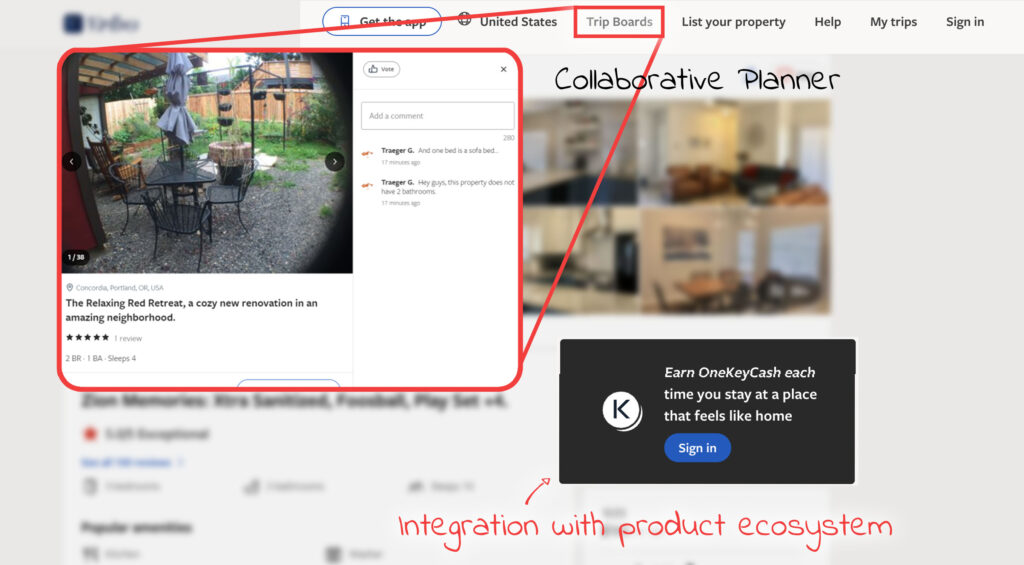
In the other corner, VRBO also fills out its top level navigation with the usual findings (support page, localization and account.) Vrbo also uses this opportunity to push its app, presumably to capture more usage data than possible within a browser. It also has an interesting new addition unique to Vrbo, a collaborative space called Trip Board. Introduced in 2019, this features hopes users are a group of multiple sides that only uses VRBO to communicate about listings, again punching at a closed ecosystem to capture more Session Duration and ad trackers.
Advertisement Elements effect on UX
| Ads and Trackers | Percentage of Paid Search | AVG Visit Duration | |
 | 22.84% | 2m 54s | |
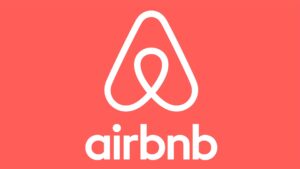 | 6.9% | 7m 44s | |
 | 19.3% | 6m 05s |
Source: www.similarweb.com
As a philosophy, I believe in a free and open internet. However this view runs afoul against companies that rely on ad revenue to supplement a free(ish) product. The result is an assault on user privacy. This table is to illustrate that tracking users does not directly correlate to ad spend or size to drive page hits. It is a deliberate choice about how overtly the platform wants to treat its user privacy.
Conclusion
Plum guide is a refreshing reminder that User Experience elements present in a website are a reflection of how a company wants to treat its users and how they differentiate themselves from the competition. The curation allows Plum Guide to rely less on the traditional, spur-of-the-moment style of layout and present a thoughtful boastful listing about the area rather than the property itself. This does hinder them in navigation with no ability to jump around looking for the information they need, and focuses on local guides aligned on highlighting the best for a city.
While AirBnb and Vrbo capitalize on needing a nice place to crash after that out-of-state concert or catch your breath between multi-day seminars, Plum Guide positions itself as that savvy friend who wants to take you on tour of their ever-evolving city.